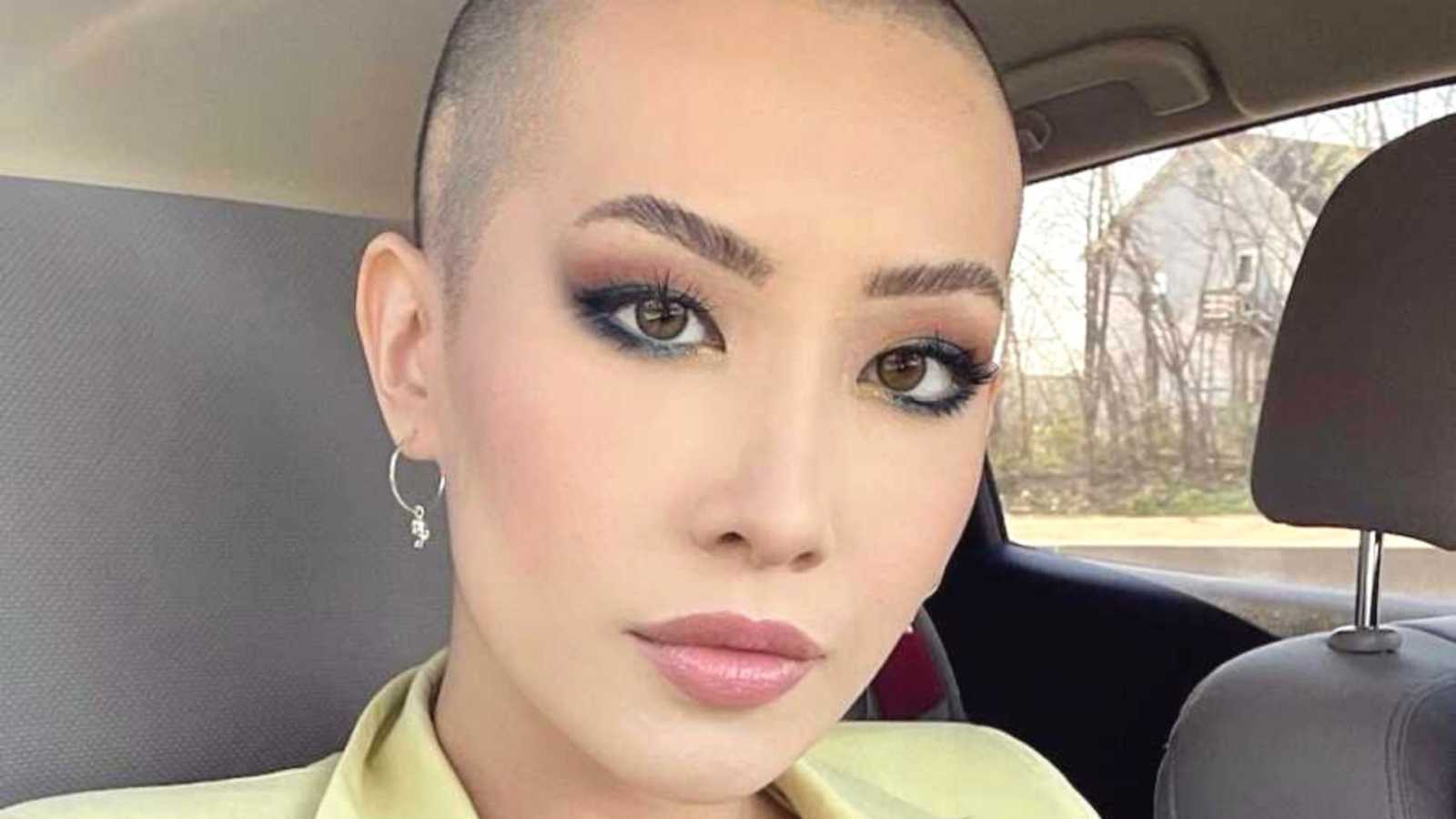“At some point when I was 19, I took an ordinary shower. As per routine, I gently lathered shampoo and rinsed, balling my hands as I worked down long, silky hair. But this time I felt a fullness in my closed fists that was not-so-ordinary. Uncurling my fingers revealed countless silky, dark strands in tangled clumps among the suds.
Over the following weeks, fishing clumps of hair from the drain became part of that daily shower routine. Submitting my scalp to 23 corticosteroid injections administered by a doctor became a new monthly routine. I dutifully bowed my head to the needle, drenched it in men’s Rogaine, and used various creams and ointments as prescribed. But shiny patches of scalp began to dot my once-enviable head of hair in greater numbers every day until there was no more hiding it with strategically parted tresses. I started to resemble Gollum— but with a better face!
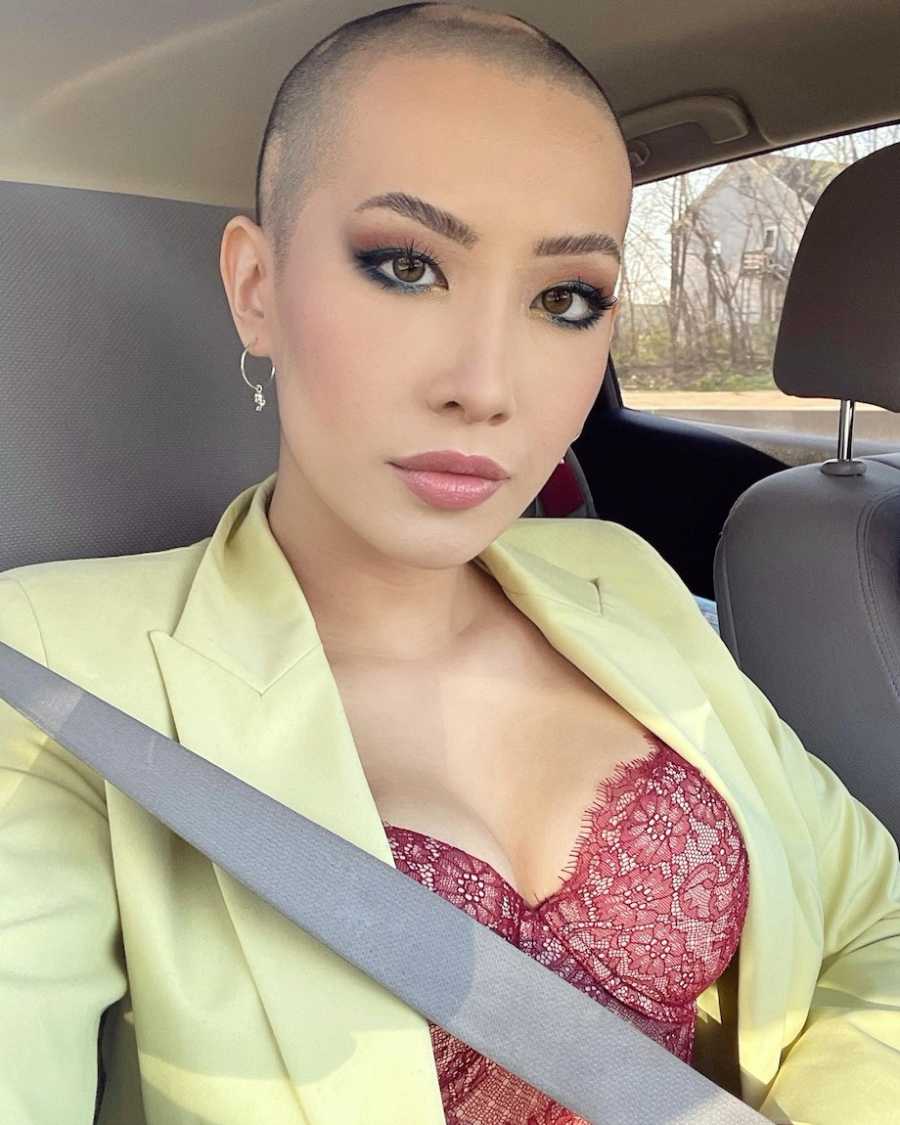
I was diagnosed with alopecia, which results in partial to total hair loss. At first, what I felt was shock, mostly. Though I tried everything I could to reverse the course of the condition, I didn’t feel particularly sad or devastated, perhaps due to my life circumstances at the time. I work as a horticulturist and have my own place now, but at the time I was a couch-surfing teen without a permanent home who worked at a movie theater. I had few possessions but plants and horticulture textbooks I kept at a friend’s place and was focused on just getting by and quietly building my skills and knowledge, and small savings enough to gain a better job and some stability. Losing my hair was an unwelcome surprise but I treated it as just another inconvenience to toss onto the towering pile of challenges I was struggling with at the time.
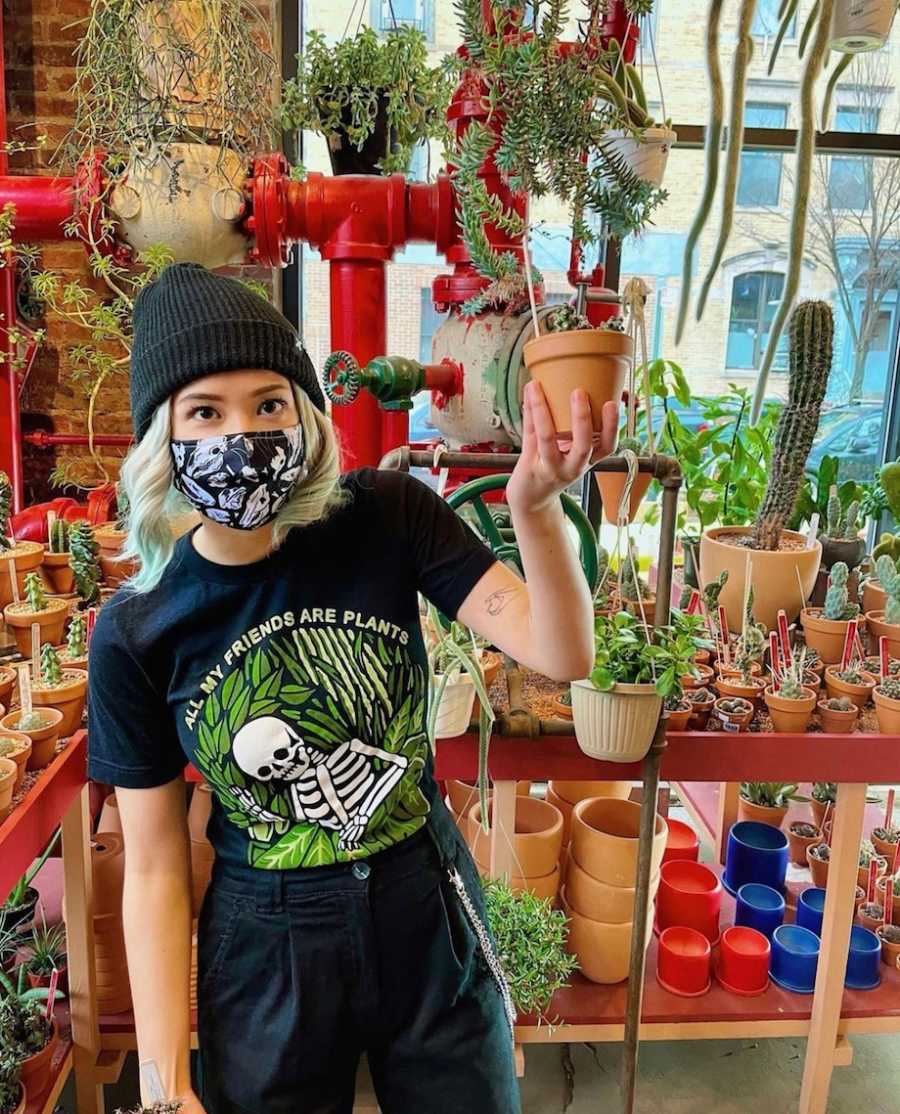
Alopecia is a genetic, autoimmune skin disease. If you have the gene, you have the gene. But even if it’s in your genetic code you won’t necessarily experience an onset of alopecia unless it’s activated somehow. There are no clear answers to what triggers it, and there is no cure or turning back once you have it. Sure, treatment can sometimes make your hair grow back but it’s not a permanent fix, and you could expect to be on treatment for the rest of your life if you want to maintain the growth—while always worrying about the unpredictable nature of the disease and fearing the day treatment stops working.
Looking back, I do think there were certain stressors in my life that flipped the ‘on’ switch for my alopecia somewhere in my DNA. I was kidnapped, held captive, falsely imprisoned—whatever you want to call it, abroad for about a month. Yes, physical abuse, forced drugs, etc. were involved but I won’t go much deeper than that. Going through that and then coming back to the states broken and without a home is definitely enough of a stressor on the body and mind to trigger a physical condition like mine. But I’m fortunate I never saw my hair loss as a reminder of all that, and moving forward, I had all the normal difficulties and challenges any girl would have losing her hair.

As I was applying for jobs, the first realization that made me take my alopecia more seriously was looking ‘like Gollum’ wasn’t considered professional in the workplace, and in some places even considered a distraction. This was extremely stressful for me during my job search. I looked into wigs. There were three kinds of wigs: (1) affordable synthetic pieces in natural colors that didn’t look remotely passable; (2) affordable synthetic pieces worn by cosplayers in fantasy colors that DID look passable but unnatural colors still considered inappropriate in some workplaces; (3) real, human hair wigs that cost between $100 (for something very short and not my hair texture) and $10,000 (for something high quality, long, and glamorous). Nothing in the hundreds to thousands of dollars range was affordable to me at the time, and I certainly was not going to find a piece that resembled my bio hair. So I resorted to shaving my head, wearing the cheap colorful wigs for fun, and using headscarves the rest of the time.
A lot of people thought I had cancer at this point. But when you clarify it’s alopecia, people can either be super accepting or more often, say ‘it’s just hair,’ meanwhile looking at you completely differently and treating you with prejudice and judgment.
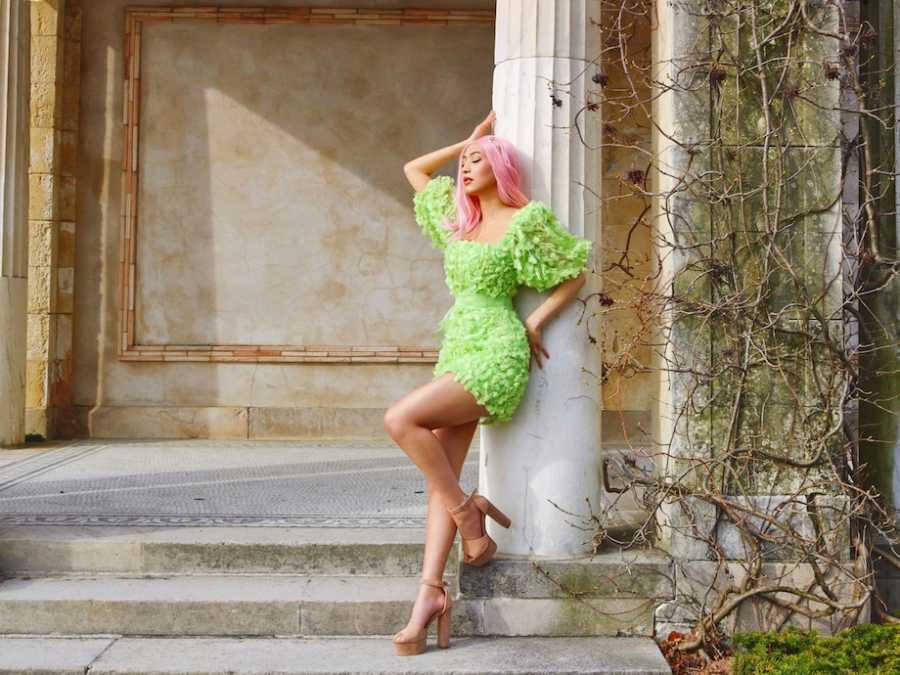
I’ve had my fair share of negative social experiences due to my hair loss. I’ve been harassed and called homophobic slurs, I’ve been told I was physically disfigured and ‘undateable’ by people who had been previously interested in me, I’ve been pitied by people who commented ‘what a shame’ and ‘what a waste of a body’ and was even held by the TSA at JFK airport for over an hour when I decided to travel with a headscarf! Because of course, a brown girl with a head covering must be a threat, right? Even when what I was wearing didn’t look remotely like any sort of religious head covering— not that that’s something to target someone for in the first place. That particular situation happened a lot at work too, where customers would pull their children away from me or switch cashiers so they wouldn’t have to interact with me. Nothing like misplaced islamophobia to show you some perspective. Is that how some women are really treated in their day-to-day life? I really hope my experiences were just a fluke and I just had the bad luck of running into a bunch of racists.
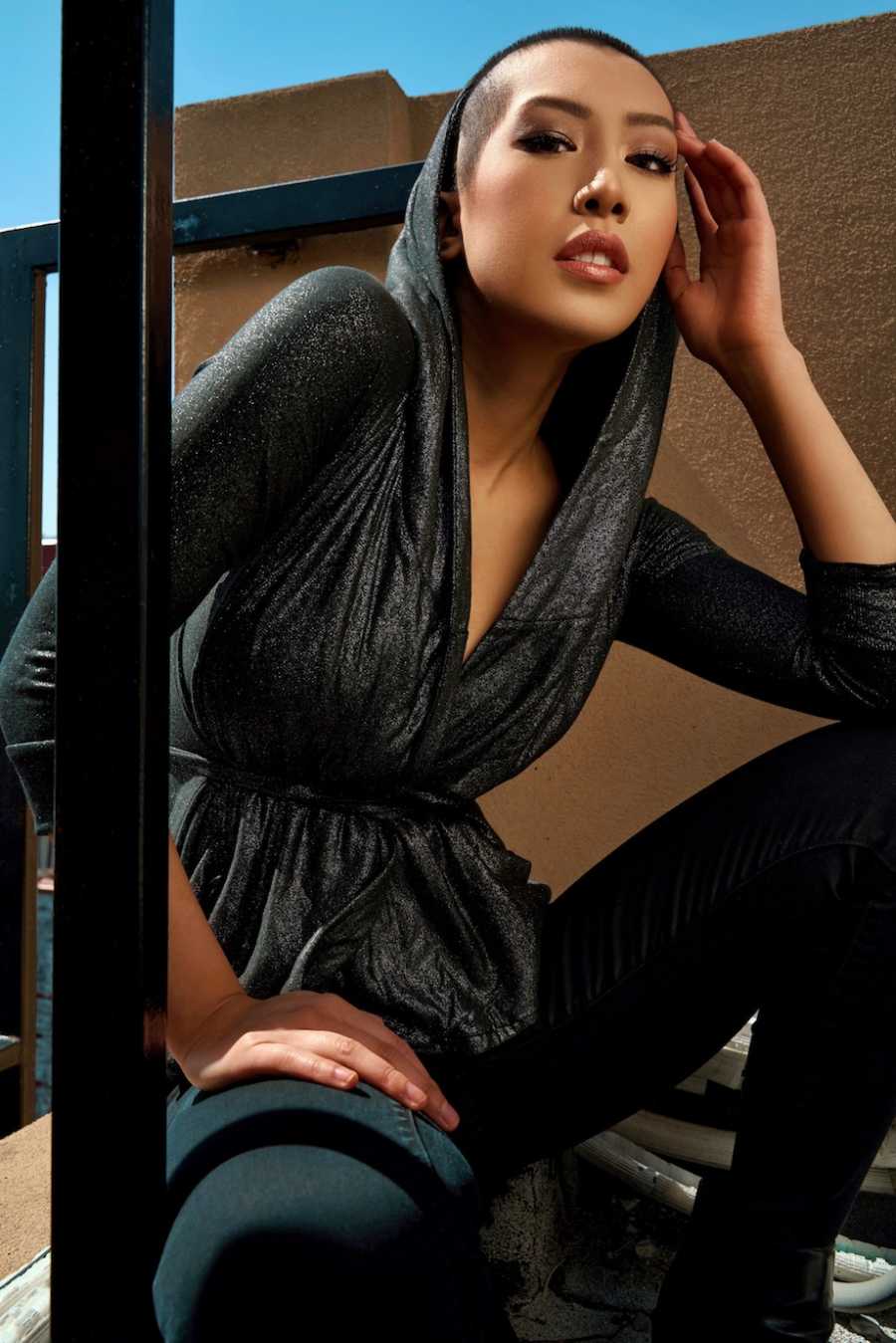
But in the end, none of these experiences were related to my physical health. They were all reactions from other, regular people who simply didn’t know what they were looking at. I realized this disease is not cruel, the stigma is. Today I’m in a good place and have been for a while. I have great friends, a beautiful apartment, I feel comfortable, liberated, and beautiful in my own skin, and am in a position where I can help others.
So this year, I sought a public platform on which to spread awareness for alopecia and rebel against the notion that hair is a requirement for beauty. I applied to compete in the Miss USA Pageant system and became a titleholder for my town. My title is Miss Stamford USA 2021, and I’ll be competing in Miss Connecticut USA as an official state finalist!
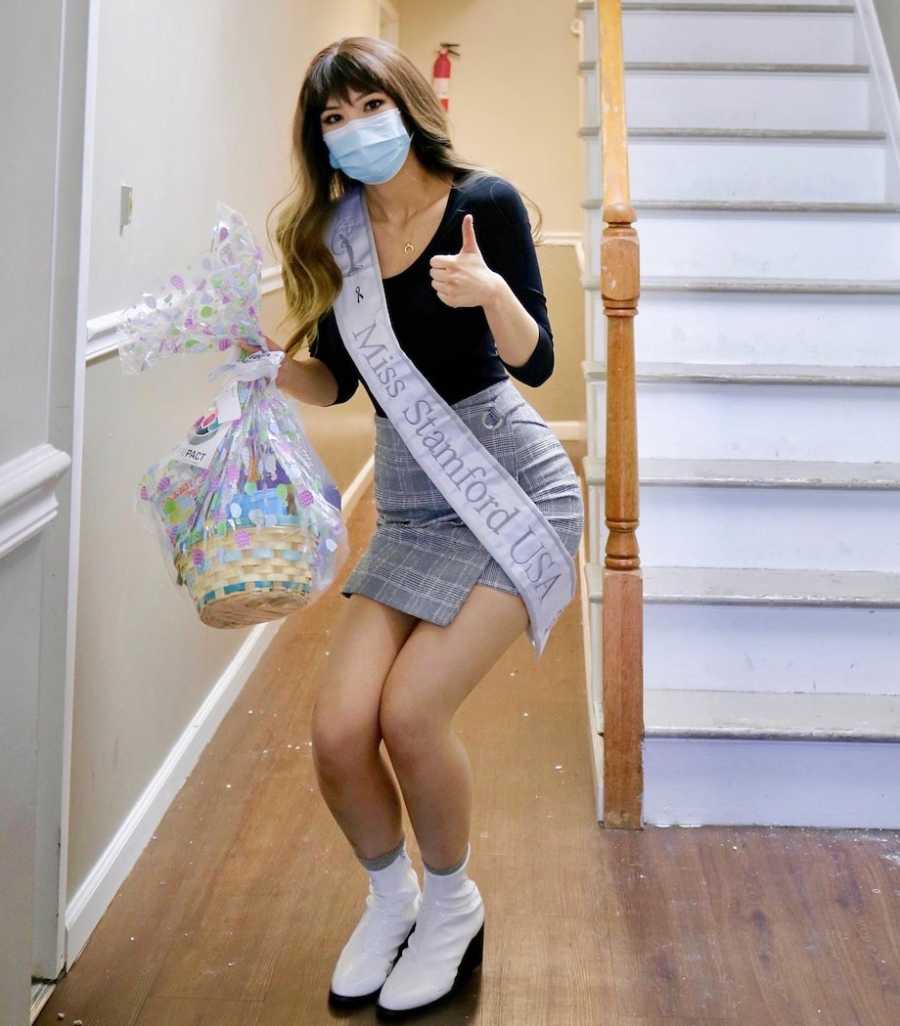
I don’t believe alopecia diminishes the worth, value, or beauty of a woman, or any person. Still, alopecia can be psychologically devastating for people, especially for young women. Women especially tend to feel shame over their appearance and societal pressure to disguise themselves (if they can afford it) or stay out of the public eye altogether. Sometimes, no matter how beautiful a woman is on the outside and inside, she will never feel beautiful enough. I want to tell that woman she IS beautiful enough. Not just to step outside her home as herself and simply be seen, but even to stand proudly on the stage of an internationally recognized beauty pageant. I have an opportunity to expand the definition of beauty, and to publicly declare we are here, we are beautiful, and we are valuable assets to the community.
I think I’m pretty prepared to take on this responsibility, but it’s not a responsibility I can take lightly. Competing in a pageant with any sort of illness or glaring physical difference is walking a very fine line. I’m doing this to increase our visibility, but I need to make that visibility as positive and empowering as possible, otherwise, I risk soliciting pity, rather than empathy. And pity would be the unhelpful, unempowering reaction to this cause. It’s easy to do something like this and if you’re not careful about your narrative, have it turn into a sob story, and start leaning on people’s sympathy. I was more open about my circumstances for this project, and I know my past was a little dark, but I’m not a dark, sad, or suffering person.

With alopecia, you can still experience joy, life, and personhood to the fullest. This is the side of alopecia I want to share with the world. I don’t want to inspire sympathy, I want to inspire hope, and empower girls, the millions of girls with alopecia who feel like the condition is taking something from them, something more than hair—and help them feel like badasses that can have it all.
So I’m being very deliberate about communicating my alopecia is something I have and embrace, but it doesn’t define me. My goal is to humanize alopecians by showing we are just people, who just happen to not have hair. I want people to see that like anyone else, we all have individual qualities and characteristics that make us interesting to others.
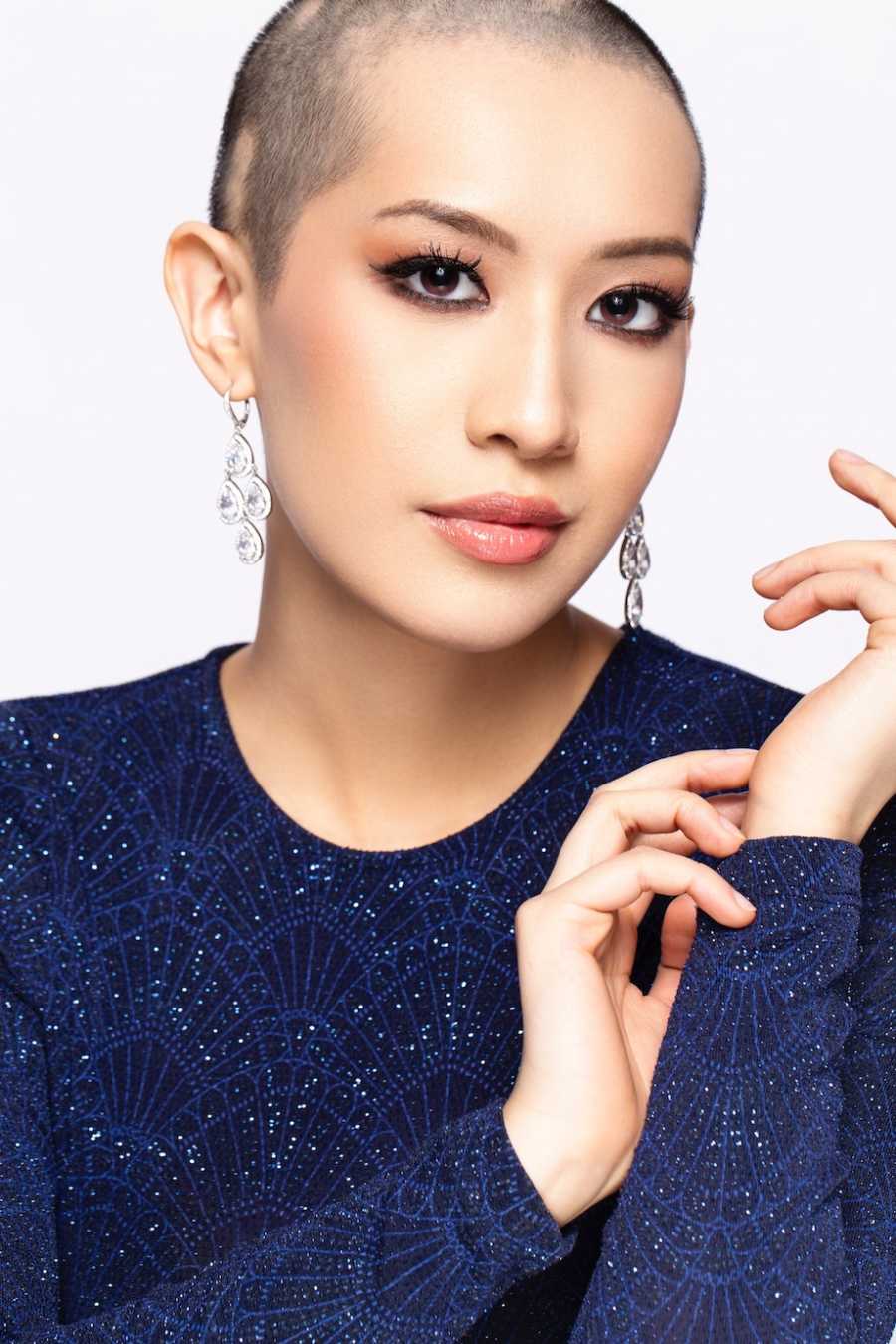
I’m starting to have a greater appreciation for public activists and advocates for any cause. The power and will to push forward in the face of harsh public ridicule, or general unsupportiveness takes a special kind of courage I never thought about until now.
Someone messaged me trying to advise I tone down the degree to which I show my alopecia in photos on my personal Instagram page. They made the argument that showing my patches was analogous to body odor, in that ‘perfume and the idea people can smell good naturally is also an unrealistic beauty standard, but that doesn’t mean people accept someone not wearing deodorant,’ as well as ‘arguing for relaxed views on sexuality by flaunting a boner.’
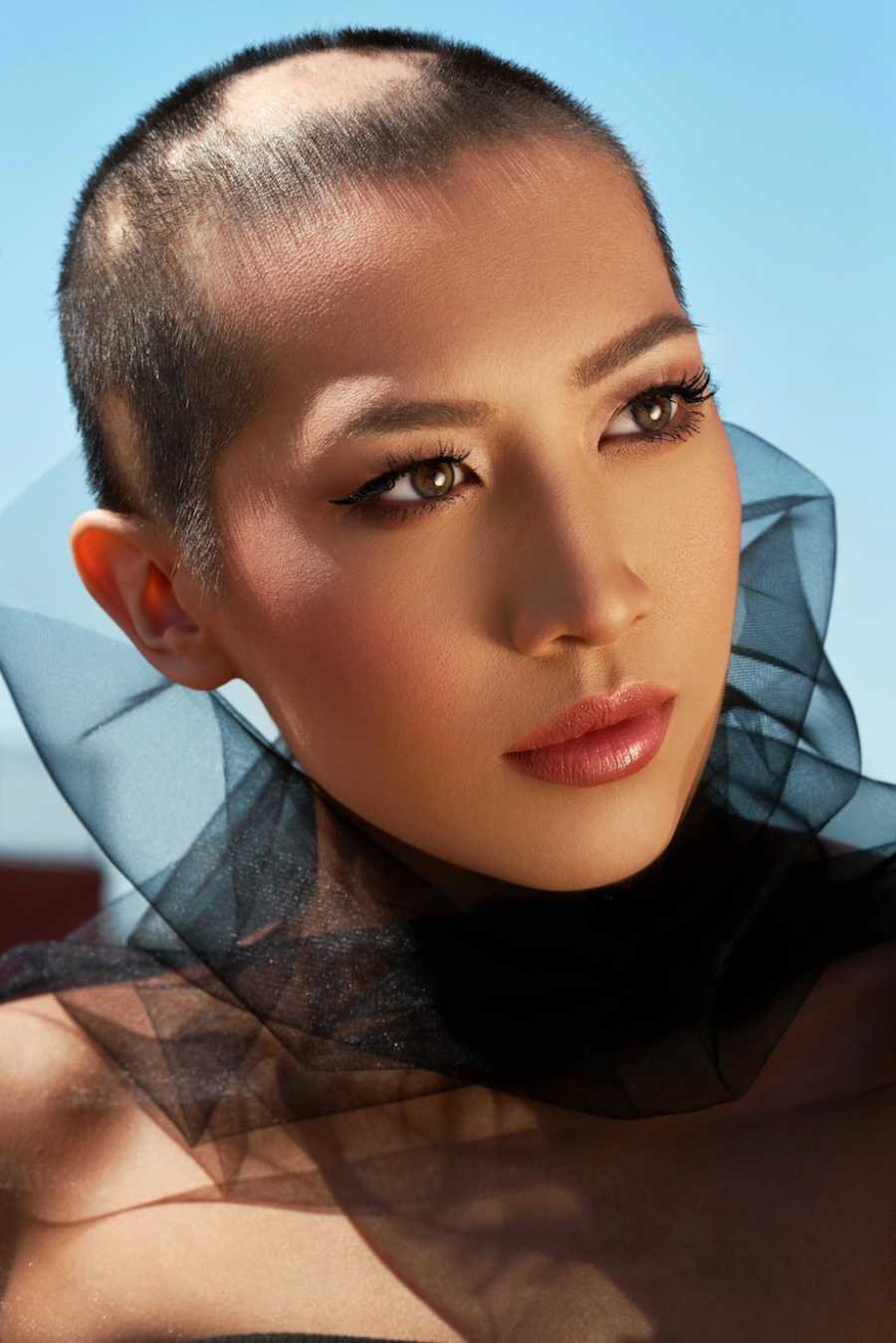
Now one of these is an assault on the senses so much so it is considered medically significant and there are occupations, especially in the medical field where staff are required to have no odor— even if it’s from perfume and generally considered good because strong scents can pose a health risk for some patients. The second comparison is literally sexual assault.
And to confront the fact my medically induced appearance, which is shared by the same fraction of the population that has red hair, is just as offensive to some people as sexual assault, is not an easy thing to grapple with and face publicly. But by far the most painful comments come from the alopecia community itself, from people who have been so beaten down by the stigma they are still struggling to regain their confidence.
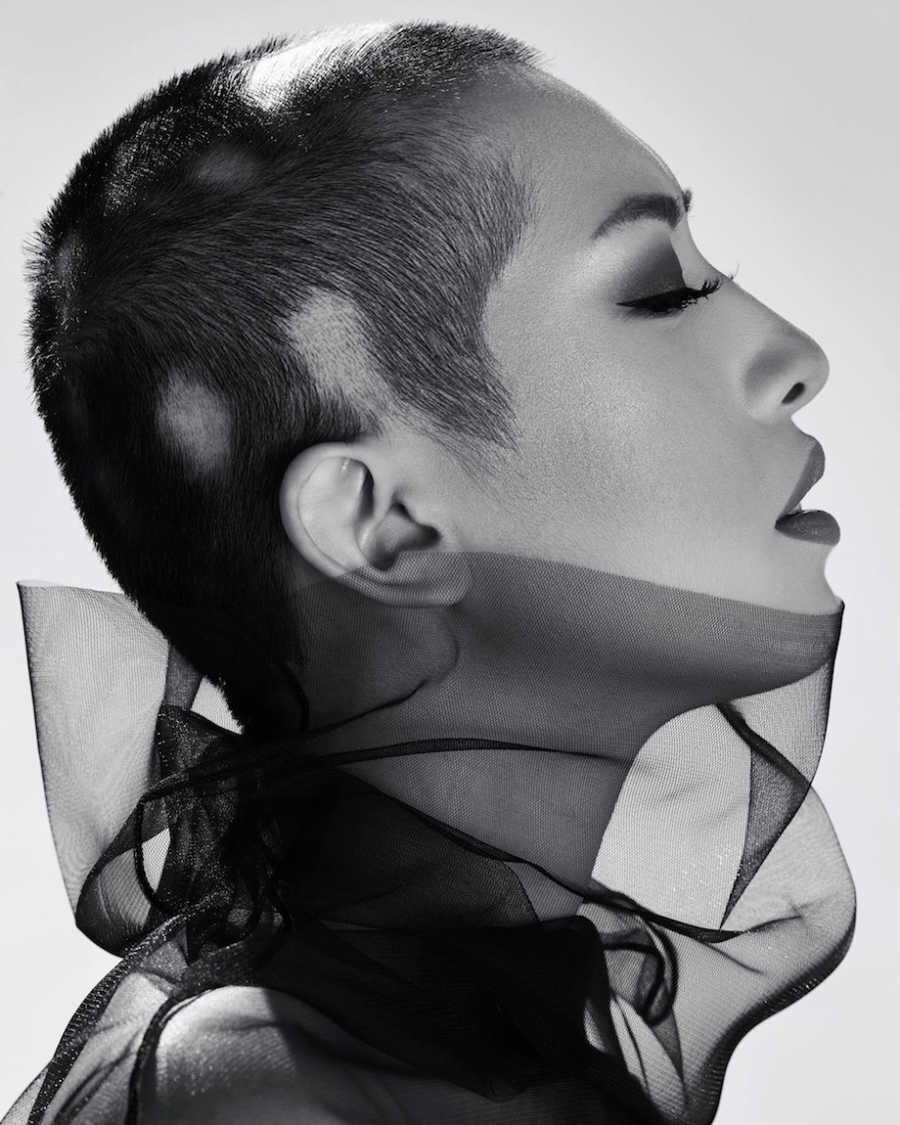
I announced my participation in the pageant and someone with alopecia said, ‘Bald is effing awful. Why would we state the exact opposite of the ugly truth?’ I just looked at that comment and I thought, this is why.
So hundreds of millions of people with what is, for the most part, a superficial condition don’t have to feel awful to the point of putting their life on hold.
So this extremely common condition isn’t unknown to the world just because the population that has it is forced into hiding.
So we can stop sacrificing our quality of life simply because people will tell us we are not beautiful enough to live.
I told her I am not stating the opposite of an ugly truth. I’m stating the opposite of an ugly misconception. Losing hair does not equal losing value.”
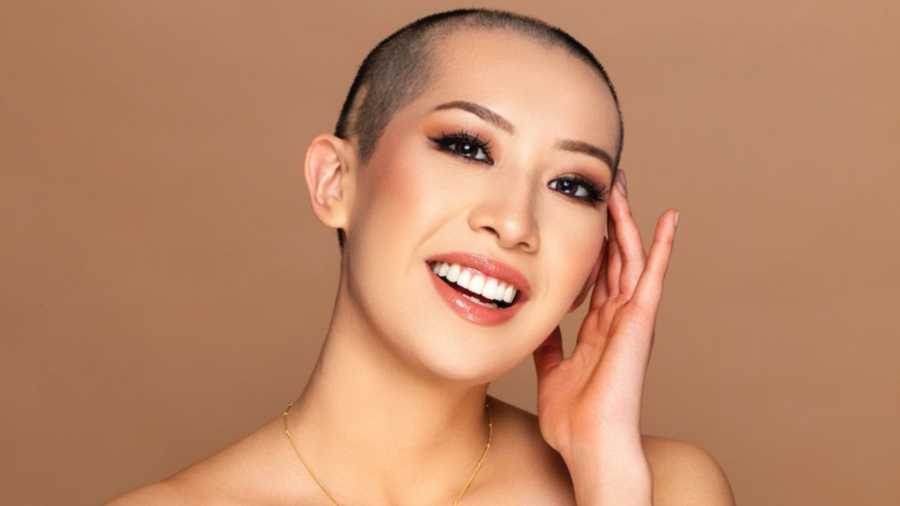
This story was submitted to Love What Matters by Renee Reyes from Stamford, CT. You can follow their journey on Instagram Instagram. Do you have a similar experience? We’d like to hear your important journey. Submit your own story here.
Read more touching stories like this:
SHARE this story on Facebook to help celebrate unique and beautiful differences!

